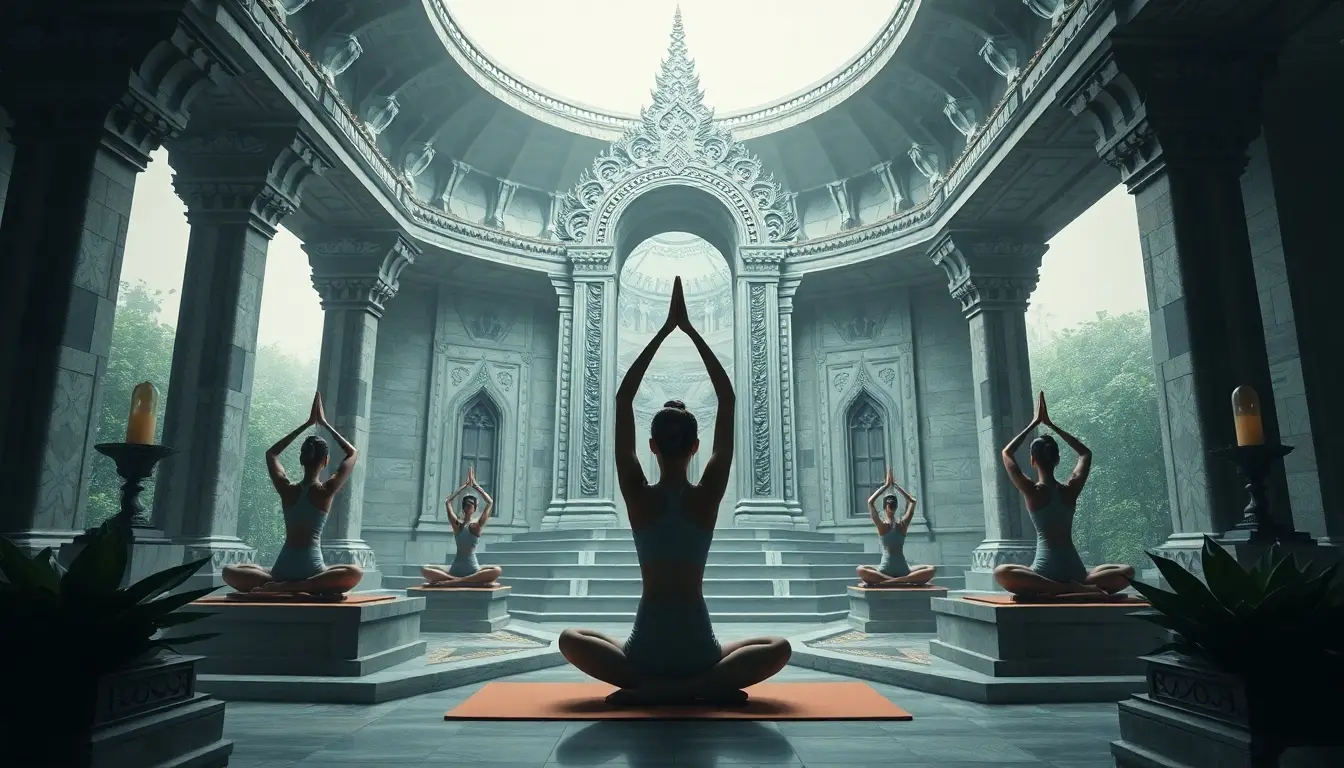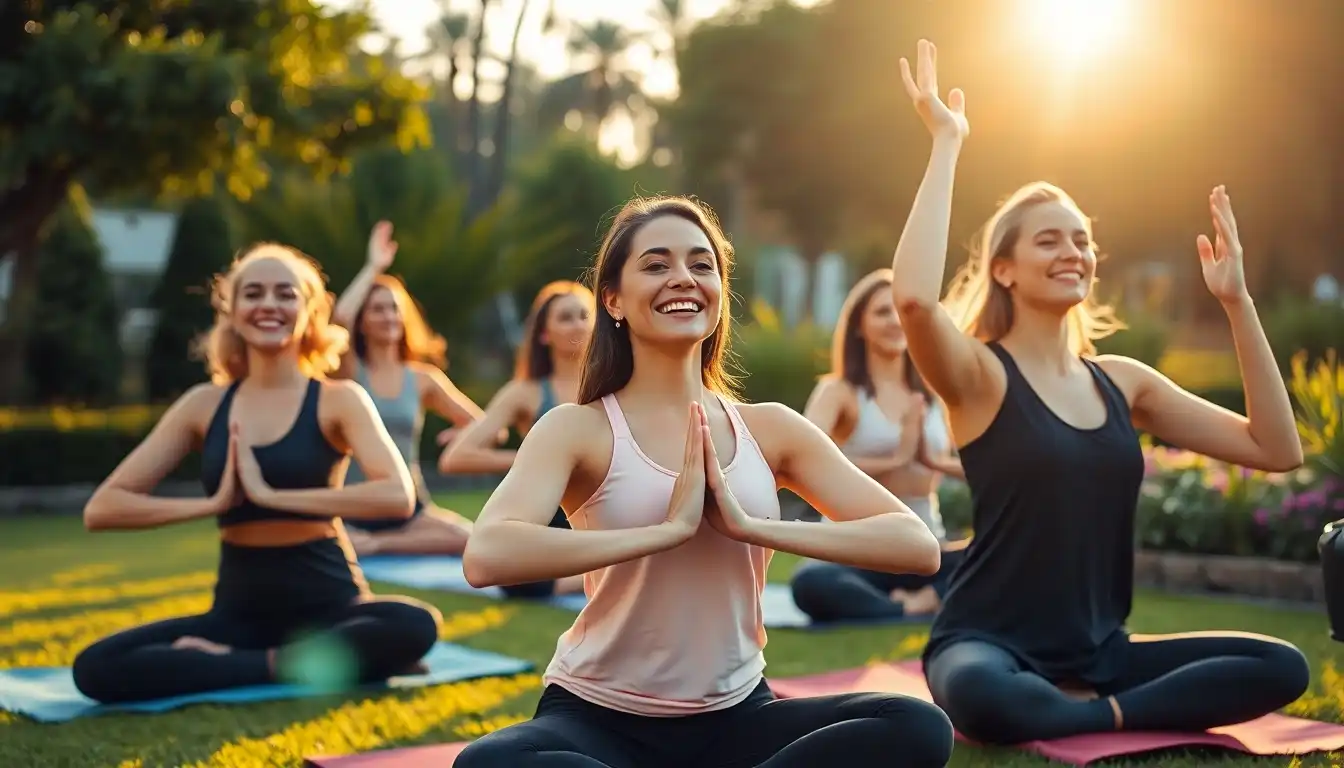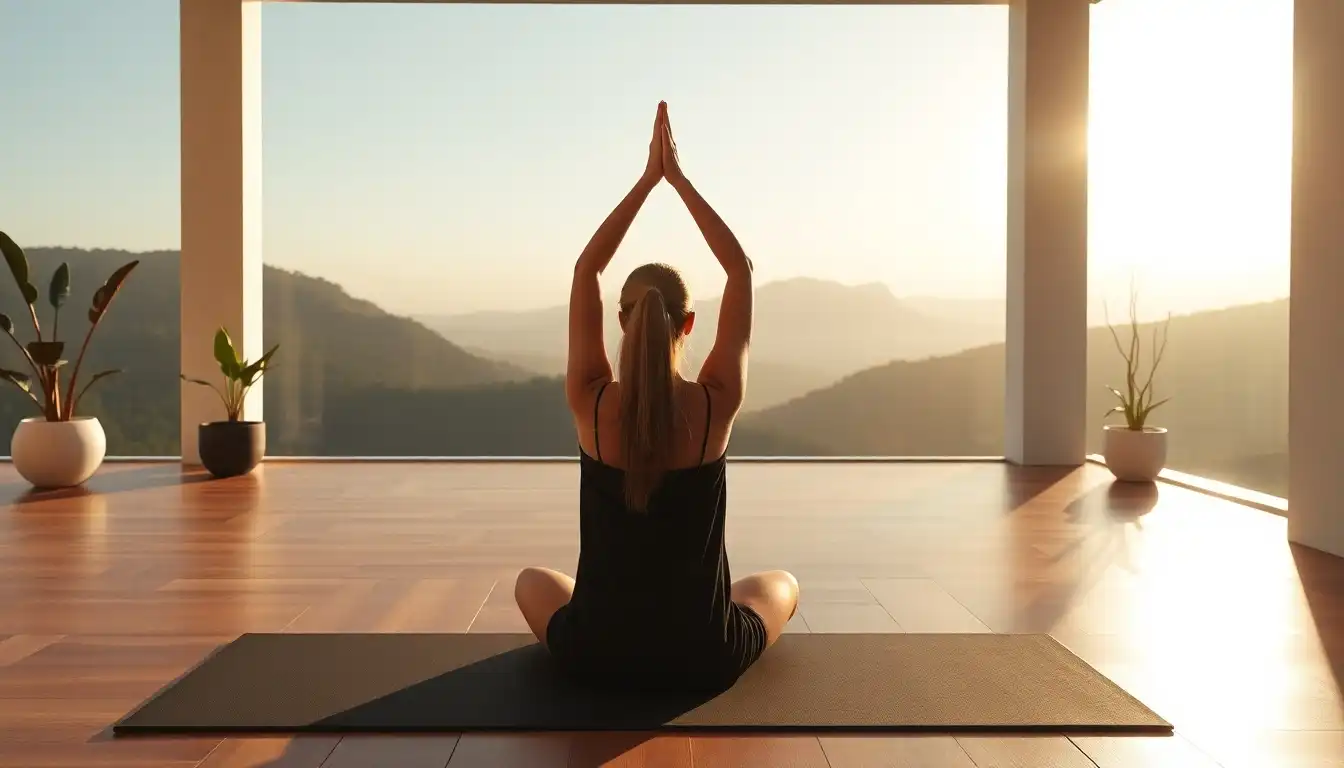Table of Contents
ToggleThe lens of observation of the mind and body through yoga offers a profound framework for understanding our inner and outer experiences. Engaging with this practice not only enhances awareness but also deepens the connection between the mental and the physical. This exploration invites individuals to embrace yoga as a holistic journey.
Understanding the Lens of Observation in Yoga
The lens of observation of the mind and body through yoga serves as a powerful tool for self-discovery. This approach invites practitioners to observe their thoughts and bodily sensations without judgment, fostering a greater understanding of their emotional and physical states. Through various asanas, individuals learn to align breath with movement, cultivating mindfulness.
As practitioners engage deeply with their choices during yoga, they begin to notice intricate patterns and habits in their mental processes. This awareness not only promotes personal growth but also encourages the development of a compassionate mindset toward oneself. The practice becomes a mirror reflecting the internal landscape shaped by life experiences.
Observing the mind and body requires a delicate balance of awareness and acceptance. As one flows through movements, insights emerge that can lead to profound transformations. This holistic observation encourages a dialogue between the inner self and the physical vessel, allowing for a richer and more authentic existence.
- Develops self-awareness through mindful practice.
- Encourages acceptance of present feelings and thoughts.
- Creates space for personal insights and growth.
- Builds a bridge between mental clarity and physical strength.
- Enhances emotional resilience and adaptability.

The Role of Mindfulness in Yoga Practice
The lens of observation of the mind and body through yoga is intrinsically linked to mindfulness. Mindfulness involves focusing one’s attention on the present moment, acknowledging thoughts, feelings, and sensations without judgment. In yoga, this practice is essential for cultivating a deeper awareness of how the mind and body interact.
Practitioners often start their journey by setting an intention for their practice. This encourages a mindful approach by reminding individuals of their purpose during the session. As the breath flows and the body moves, it becomes vital to stay present—this engagement enhances the overall experience of both mind and bodyworking in harmony.
Incorporating mindfulness into yoga creates a rich tapestry of awareness that can extend beyond the mat. As practitioners refine their observation skills, they can carry this understanding into daily life, helping them navigate challenges with greater clarity. It strengthens the connection between mental processes and physical responses, leading to more authentic living.
- Encourages mindfulness and present moment awareness.
- Fosters intention-setting for deeper practice.
- Promotes emotional clarity and resilience.
- Enhances connection between physical actions and thoughts.
- Supports holistic development in everyday life.
Diving Deeper into the Practices
The lens of observation of the mind and body through yoga can manifest in several specific practices. Each asana, or yoga pose, provides unique insights as practitioners listen to their bodies and observe their thoughts. By embracing this comprehensive practice, individuals nurture a holistic approach to personal development.
Meditation is one integral component of this lens. It allows individuals to cultivate an inner stillness that is essential for observing thoughts without attachment. This stillness enhances one’s capability to respond to life situations, promoting a healthier mindset. Meditation serves as a pathway for reflecting on experiences, leading to deeper self-awareness.
Pranayama, or breath control, also plays a crucial role in this framework. The breath serves as a bridge, connecting the mind and body. By consciously manipulating breath, practitioners can influence their emotional and physiological states. This connection underscores the importance of a balanced and observant approach to both physical and mental practices in yoga.
- Incorporates meditation for self-reflection.
- Utilizes pranayama for mindful breath control.
- Encourages exploration of different asanas.
- Deepens understanding of mind-body connection.
- Facilitates a path toward inner peace.

Exploring the connection between mind and body through yoga.
Lens of Observation of the Mind and Body through Yoga
The lens of observation of the mind and body through yoga invites practitioners to explore their inner landscapes with heightened awareness. This approach can lead to deeper insights into personal patterns, improving both mental clarity and physical well-being. By engaging in yoga, individuals can foster a profound connection between breath and movement.
The observations made during yoga practice enhance self-awareness, leading to personal growth and emotional stability. By tuning into thoughts and feelings during poses, individuals can identify stressors or negative patterns, empowering them to make conscious changes. This process not only benefits mental health but also promotes overall vitality.
- Increased self-awareness
- Emotional regulation
- Enhanced physical vitality
- Development of mindfulness
Transformative Effects on Mental Health
Utilizing the lens of observation in yoga facilitates transformative effects on mental health. Engaging in poses while focusing on breath can create a calming effect, reducing anxiety and depression. This practice encourages individuals to confront their emotions, fostering resilience and mental fortitude.
Moreover, practitioners often report improvements in their ability to manage stress. By observing the mind and body, individuals can develop healthier coping mechanisms that allow them to respond to challenges more effectively. This transformative experience strengthens one’s ability to thrive both on and off the mat.
Lastly, cultivating a mindful approach leads to an enhanced ability to focus. The practice of observing can sharpen concentration, enabling clearer thinking and decision-making. As the mind becomes more attuned to the present moment, distractions lessen, paving the way for personal and professional success.
Physical Benefits Enhanced by Mindfulness
Through the lens of observation of the mind and body in yoga, physical benefits flourish as practitioners become more aware of their bodies’ needs. This awareness promotes better posture, flexibility, and overall strength. By observing how each pose affects the body, individuals can adjust their practice for maximum benefit.
By maintaining a consistent practice and observing bodily sensations, practitioners can prevent injury and cultivate a deeper understanding of their physical capabilities. This mindful observation fosters a sense of safety and confidence in movement, which is particularly valuable for those new to yoga.
- Improved flexibility
- Greater muscle endurance
- Enhanced body awareness
- Reduction of physical discomfort
Building Connections Through Shared Practice
Yoga, as a shared practice, enhances connections among practitioners through collective experiences of observation. Engaging in group sessions encourages the sharing of insights, building a sense of community. This bonding fosters support, creating a network of encouragement for continued growth and exploration.
Analyzing and discussing personal experiences within a group can deepen understanding. Practitioners often discover unique interpretations of their practice, enriching their perspectives. This exchange of ideas amplifies the benefits of yoga, allowing individuals to navigate their journeys with the support of others.
Ultimately, the lens of observation fosters empathy and compassion. As practitioners become more attuned to their own bodies and minds, they also develop a greater understanding of the shared struggles and triumphs among their peers. Such connections contribute meaningfully to a holistic approach to health and wellness.
Emotional Awareness and Its Impact on Daily Life
The lens of observation of the mind and body through yoga promotes emotional awareness, which significantly impacts daily life. By recognizing and acknowledging emotions during practice, individuals can better navigate their feelings outside the studio. This emotional literacy fosters healthier relationships and improves overall communication.
Building emotional awareness also enhances decision-making. Practitioners often find themselves more grounded and centered when addressing challenges, leading to clearer, more thoughtful choices. As a result, this mindfulness enhances both personal and professional interactions, creating a ripple effect of positive change.
- Improved communication skills
- Enhanced decision-making abilities
- Healthier relationships
- Increased emotional resilience
Long-Term Health Benefits from Consistent Practice
Through the lens of observation, the long-term health benefits of yoga become increasingly evident. Regular practice nurtures physical and emotional health, promoting an overall sense of well-being. As individuals become more aware of their bodies and thoughts, they can better manage their health and wellness goals.
The cumulative effect of consistent yoga practice can lead to sustained energy levels and improved immunity. As practitioners deepen their understanding of breath and movement, they also learn to integrate these principles into their daily lives, ultimately promoting healthier habits.
Moreover, this lens encourages life-long learning and adaptation. Practitioners who continuously observe may discover new ways to approach both challenges and opportunities, fostering resilience and adaptability that extends well beyond the yoga mat.

For those interested in delving deeper into the transformative practice of yoga and its myriad benefits, visiting Relhum can provide further insights and resources. Explore classes, workshops, and community support to enrich your yoga journey.

Caption: Exploring the lens of observation of the mind and body through yoga.
Exploring the Lens of Observation of the Mind and Body Through Yoga
The lens of observation of the mind and body through yoga enables practitioners to cultivate awareness of their internal states and physical conditions. This observation deepens the connection between the mind and body, promoting a holistic understanding of oneself. By observing their breath, posture, and thoughts, individuals can foster a greater sense of present-moment awareness.
This perspective encourages the integration of various practices such as asanas, pranayama, and meditation. Each practice presents an opportunity to reflect on one’s experiences, both internally and externally. Engaging with these elements of yoga not only enhances the practice but also offers insight into personal growth and self-improvement.
Considering the range of practices available, it’s worthwhile to explore various techniques to observe the connection between mind and body. The lens of observation through yoga serves as a foundational tool for a deeper understanding of oneself, enhancing the overall experience of the practice.
Five Ways to Enhance Your Lens of Observation Through Yoga
Enhancing your lens of observation of the mind and body through yoga requires conscious effort and practice. Here are five effective strategies to deepen this observation:
- Practice mindful breathing techniques to center yourself.
- Engage in regular asanas that promote body awareness.
- Incorporate meditation sessions that allow for self-reflection.
- Develop a journaling habit to record your experiences and insights.
- Explore guided yoga classes that focus on mindfulness.
These techniques encourage consistent practice and allow for individual exploration. By integrating them, practitioners can refine their lens of observation over time, fostering deeper understanding and connection.
As you progress, experimenting with different styles of yoga can lead to unique insights. Each approach offers varied avenues to explore the intricate relationship between thought patterns and physical sensations. Remember that the journey is personal and unfolds uniquely for each individual.
Mindfulness Practices in Yoga
The lens of observation of the mind and body through yoga is significantly enhanced through mindfulness practices. Mindfulness during yoga facilitates a heightened sense of awareness, allowing you to observe transitions between physical postures and the thoughts that arise during practice. This aspect of observation can reveal patterns in behavior and emotional responses.
Regularly incorporating mindfulness allows practitioners to appreciate the subtleties of their practice. For instance, noticing the sensations in the body or recognizing when the mind wanders can spark valuable insights. Such observations can eventually lead to transformative personal growth, enabling a clearer connection to one’s thoughts and feelings.
Mindfulness practices can be further enriched by integrating breathwork and visualization techniques. These tools empower individuals to not only observe but also to respond compassionately to their inner experiences. Consequently, this enriches the overall yoga experience.

Enhance your lens of observation of the mind and body through yoga by incorporating mindfulness techniques for a holistic experience.
Yoga Retreats and Community Engagement
Participating in yoga retreats can also be a transformative way to deepen the lens of observation of the mind and body. Immersive experiences away from daily distractions allow for focused personal reflection and connection with supportive communities. Such environments foster an atmosphere ripe for exploration and learning.
Being part of a yoga community helps reinforce your commitment and opens avenues for sharing insights and experiences. Engaging in group practices can amplify awareness, as observing others can provide different perspectives on shared practices. This communal aspect often enriches personal understanding.
Additionally, retreats and workshops led by experienced instructors can provide structured guidance on enhancing your observational skills. These experiences often introduce new techniques, deepening participants’ practices and promoting further exploration.
Finding Your Unique Practice
Discovering your unique lens of observation of the mind and body through yoga is essential for a fulfilling practice. Everyone’s journey is distinct, influenced by various factors such as lifestyle, beliefs, and personal experiences. Embracing this uniqueness allows for a tailored approach that resonates with your individual needs.
The importance of experimenting with different styles of yoga cannot be overstated. Whether it’s Hatha, Vinyasa, or Yin, each approach offers fresh perspectives on observing both the mind and the body. This exploration often leads to newfound insights and practices that will serve you well on your journey.
Combining various disciplines—like pranayama and meditation with traditional asana practice—can also enhance your observational skills. By remaining open to diverse methods, you cultivate a rich and expansive understanding of your practice.
Conclusion
Engaging in yoga with a focus on the lens of observation of the mind and body can profoundly enhance personal awareness and self-discovery. By incorporating mindful practices, exploring different styles, and participating in community settings, you pave the way for deeper understanding and fulfillment.
Are you ready to deepen your lens of observation in your yoga journey? Explore more resources and classes at Relhum to start or enhance your practice today. Your path to holistic well-being awaits!

Caption: A glimpse into the lens of observation of the mind and body through yoga.
Questions About Lens of observation of the mind and body through yoga
What is the lens of observation in yoga?
The lens of observation in yoga refers to the insight and awareness we cultivate about our mind and body through various practices. It helps us to understand our internal states, emotions, and physical sensations, enabling us to respond to them effectively.
How does yoga improve the connection between mind and body?
Yoga practices such as asanas, pranayama, and meditation enhance the connection between the mind and body by fostering mindfulness. This awareness allows for better alignment, emotional regulation, and stress management, creating a harmonious relationship between physical and mental health.
Can practicing yoga help with women’s health issues?
Yes, yoga can be beneficial for women’s health by promoting hormonal balance, reducing stress, and alleviating symptoms associated with menstruation, pregnancy, and menopause. Specific poses and practices are designed to support women’s unique physiological needs.
What role do mantras play in yoga practice?
Mantras are sounds or phrases that, when repeated, help focus the mind, elevate energy, and promote a sense of peace. They can enhance meditation practices, deepen spiritual connection, and create vibrational harmony within the body and mind.
How does aromatherapy complement yoga practices?
Aromatherapy can complement yoga by using essential oils to enhance relaxation, improve focus, and uplift mood. These fragrances can be integrated into the practice through diffusers, inhalation, or topical application to create an environment conducive to mindfulness.
What is the importance of healthy eating in yoga?
Healthy eating is essential in yoga as it supports overall well-being, complements the physical practice, and aids in mental clarity. A diet rich in whole foods enhances energy levels, facilitates recovery, and nurtures the body’s systems, aligning well with yoga principles.
What are mudras, and how do they relate to yoga?
Mudras are symbolic hand gestures used in yoga and meditation that facilitate energy flow and enhance the spiritual and emotional dimensions of practice. They can help focus the mind, promote healing, and deepen the connection between body and spirit.
How does pranayama affect mental health?
Pranayama, or breath control, significantly impacts mental health by promoting relaxation, reducing anxiety, and enhancing emotional stability. It helps regulate the nervous system, leading to a calm mind and improved focus during both yoga practice and daily life.
What is holistic therapy in the context of yoga?
Holistic therapy in the context of yoga emphasizes treating the whole person—mind, body, and spirit. It integrates yoga with other healing modalities, such as nutrition, aromatherapy, and meditation, to provide comprehensive support for overall well-being.
How can someone begin to observe their mind and body through yoga?
To begin observing your mind and body through yoga, start by establishing a consistent practice that includes asanas, pranayama, and meditation. Focus on your breath and sensations during each practice, and take time for self-reflection and mindfulness both on and off the mat.


